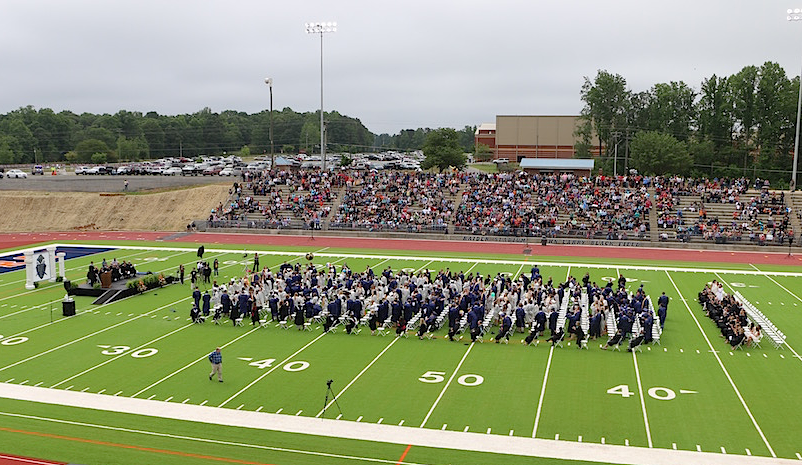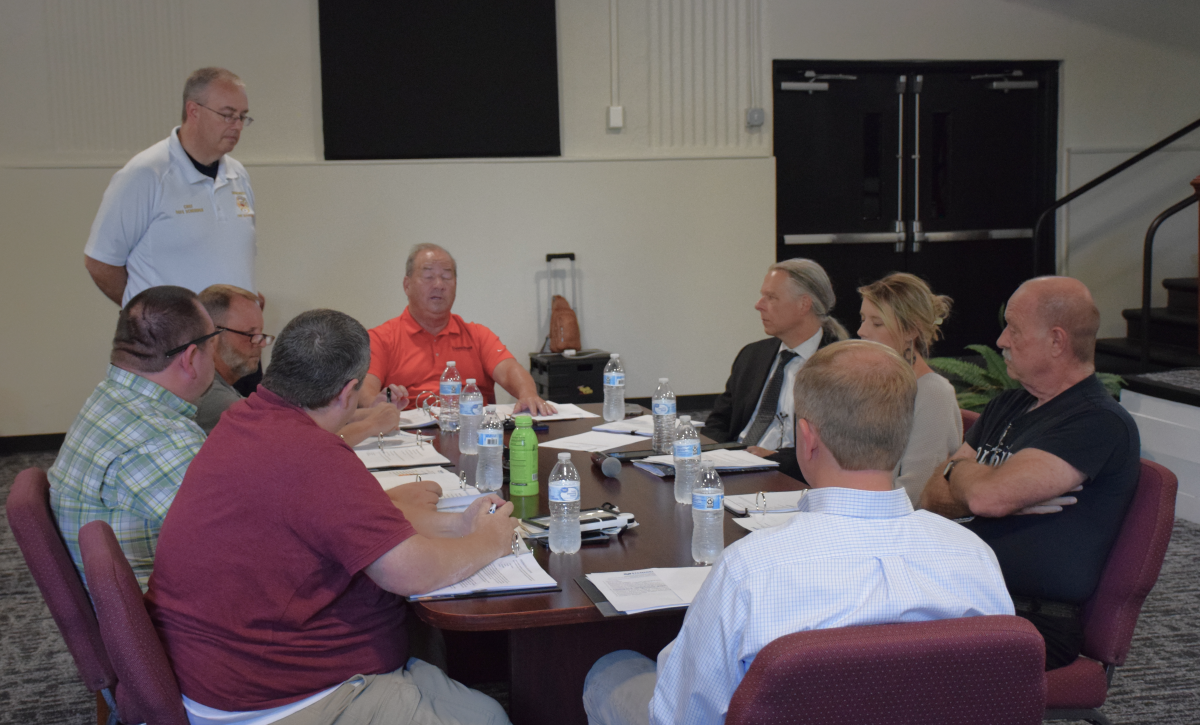
School Superintendent calls it “the biggest news in the history of our school system.”
New numbers released by the Georgia Department of Education (GaDOE) reveal dramatic improvements in Habersham County’s high school graduation rates at both Habersham Central and the Habersham Success Academy.
Central’s graduation rate has risen more than 18 points in the past five years, from 73% in 2011 to 91.2% in 2016. This year’s graduation rate puts Habersham Central 12 points ahead of the preliminary state average.
The Success Academy nearly doubled its graduation rate year-to-year, jumping from 28% in 2015 to 54.1% in 2016.
“I believe that the release of the 2016 graduation rates is the biggest news in the history of our school system,” says Habersham County Superintendent of Schools Matthew Cooper. “When a high school surpasses a 90% graduation rate they become a part of an elite group in the state of Georgia.”
“This massive improvement is a number that can be celebrated by our entire community,” says Director of Secondary Schools Pam Dalton, “as it speaks to committed parents and students, to focused teachers providing high-quality instruction in our classrooms, to dedicated school leaders ensuring that all students learn at higher levels, and to a community who believes in and supports our graduates.”
“I believe that the release of the 2016 graduation rates is the biggest news in the history of our school system.” ~ Supt. Matthew Cooper
 Calling the achievement “unprecedented”, HCHS principal Wes McGee says Central’s record-setting graduation rate didn’t happen by chance. “The faculty and staff at Habersham Central pour their hearts into providing a rigorous, relevant, and innovative atmosphere, where learning occurs each and every day,” he says. “It is such a pleasure to serve with my fellow colleagues to provide an educational process that is second to none.”
Calling the achievement “unprecedented”, HCHS principal Wes McGee says Central’s record-setting graduation rate didn’t happen by chance. “The faculty and staff at Habersham Central pour their hearts into providing a rigorous, relevant, and innovative atmosphere, where learning occurs each and every day,” he says. “It is such a pleasure to serve with my fellow colleagues to provide an educational process that is second to none.”
Similar sentiments are expressed by the principal at the Habersham Success Academy where the graduation rate includes students from both the alternative school program and the non-punitive success academy program.
“First and foremost, credit must be given to our staff and their hard work and dedication to our students,” says Habersham Success Academy Principal Rodney Long. “Our teachers and support personnel are the backbone of every initiative in place at the Success Academy. Without their efforts, the increase would not be possible.”
Beyond personnel, Long points to several other factors he and his staff believe contributed to the Academy’s improved graduation rate this year including strategic scheduling, improved on-line instruction, academic interventions, work-based learning, community partnerships, and incentive programs.
“We believe the majority of our students have realized the tremendous supports that are now in place for their benefit,” says Long. “Our desire is to help them understand and seize the opportunities afforded to them by a high school diploma.”
How it’s calculated
Georgia’s 2016 high school graduation rate is preliminary due to incomplete data from a few school districts. It’s based on a federal formula called the four-year adjusted cohort graduation rate.
 This is the sixth year Georgia has used the adjusted cohort rate, which is now required by the U.S. Department of Education. It’s calculated using the number of students who graduate within four years and includes adjustments for student transfers.
This is the sixth year Georgia has used the adjusted cohort rate, which is now required by the U.S. Department of Education. It’s calculated using the number of students who graduate within four years and includes adjustments for student transfers.
Before 2011, graduation rates may have included students who took more than four years to graduate. Because the adjusted cohort rate is a national standard, graduation rates can now be compared between states.
The bottom line
Cooper says the 2016 graduation rates at Habersham Central and the Success Academy indicate “great progress” is being made in those schools and in the entire school system. “It is clear that our entire Habersham County School System team has contributed to this accomplishment. Our students, parents, teachers, administrators, staff members, school board, and community have all played a big role in moving our graduation rates forward.”
“We have more students graduating, which means more students beginning their journey to be productive members of our society,” says McGee. Ultimately, says Cooper, that is the goal. “It is important to realize that a graduation rate is more than just a number,” he says. “An improved graduation rate means that real students have increased life chances and that more students have an opportunity to attain the ‘American Dream’.”






